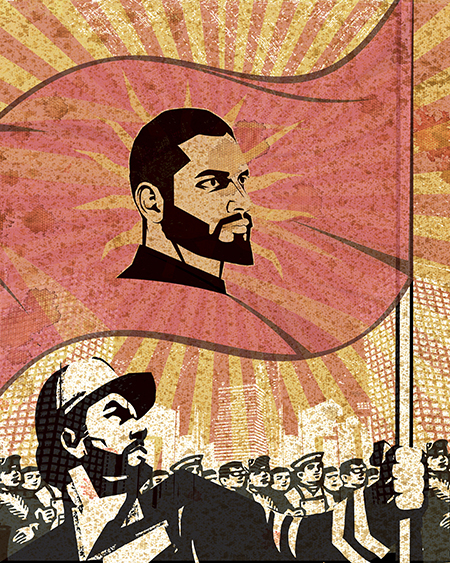
Continuing through November 8, 2014
Rarely do we get a chance to see artwork by an Egyptian, Iraqi and Turkish artist in the same exhibition. “Mapping Strife” features paintings, photographs, works on paper, videos and installation pieces by three Arab-world artists. Khaled Hafez from Egypt, Ferhat Özgür from Turkey and Mahmoud Obaidi from Iraq tackle the geopolitical and sociopolitical landscape of the Middle East in an effort to strip away the stereotypes that shape worldwide perception.
Cairo, Egypt resident Hafez works in a variety of media, including painting, photography and video, as well as installation. Trained as a medical doctor, he gave it up to be an artist, studying new media and the digital arts in New York and Austria. His paintings and videos include references to ancient Egyptian painting and its depiction of movement as opposed to the static nature of Egyptian sculpture. Masked stylized figures with muscular bodies move through large urban landscapes that mix ancient iconography with contemporary figures and dripping paint.
Obaidi was born in in Baghdad, Iraq but studied film and new media in Canada and Los Angeles. He explores the visual construction of authoritarian power, creating an imaginary ruler and his political campaign using powerful graphics and propagandist methods employed by such dictators as Stalin, Mussolini and Hitler. The leader appears on flags and postage stamps or standing behind fierce, machine-gun toting men, reminding us how power, propaganda and art are intertwined.
Istanbul, Turkey artist Özgür uses metaphor, irony and surrealism in works on paper and site-specific murals depicting scenes of confrontation. His anti-militarist approach focuses attention on the repression associated with masculine political power, as well as the West’s interest in the Middle East’s oil reserves. In one explicit wall drawing, a penis grows into a huge gas-pump nozzle facing off against a suited creature wearing a distinctly western fedora.
Despite the brutality that these artists have witnessed, they prefer to use nostalgia, humor and irony in their work rather than focus on the violence that goes hand in hand with totalitarianism.
